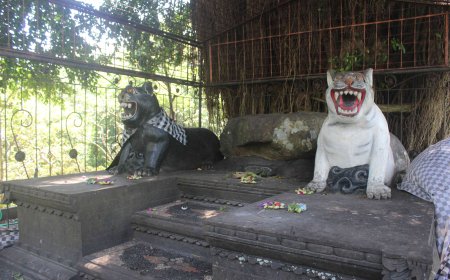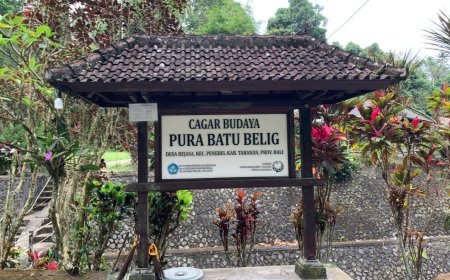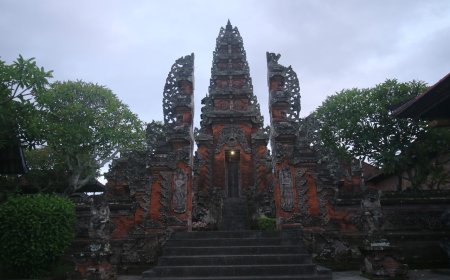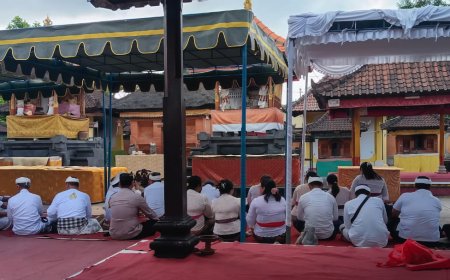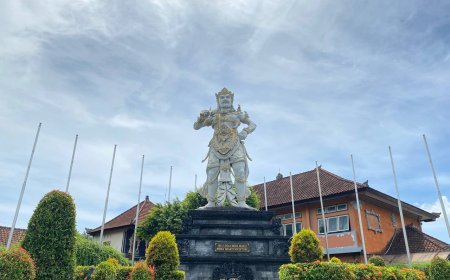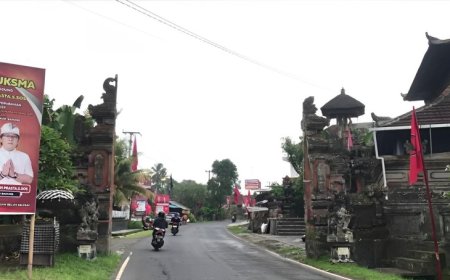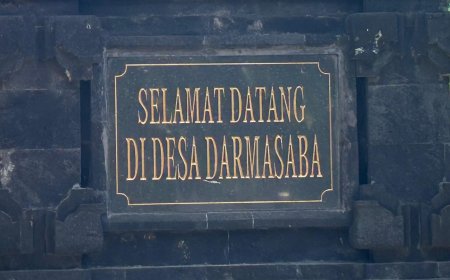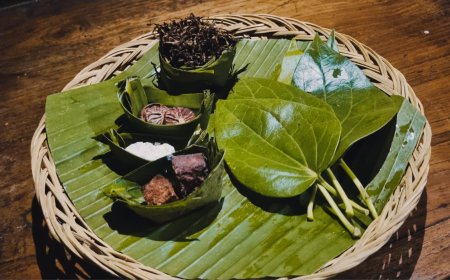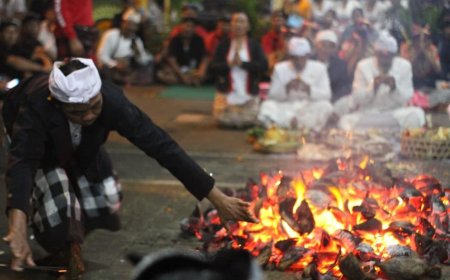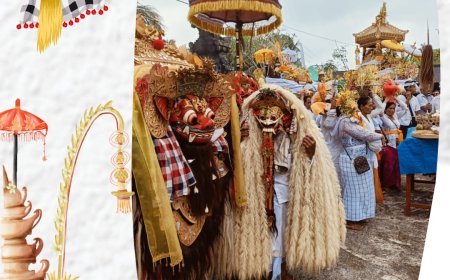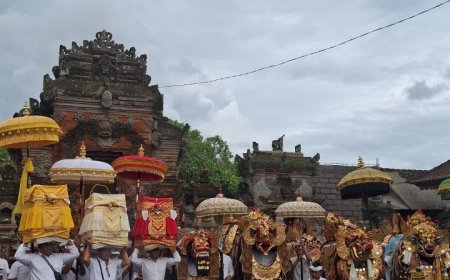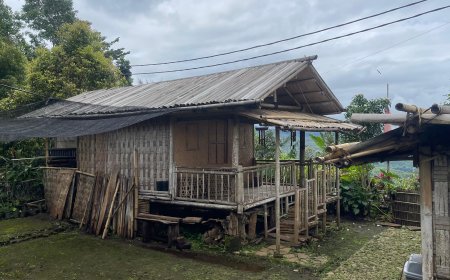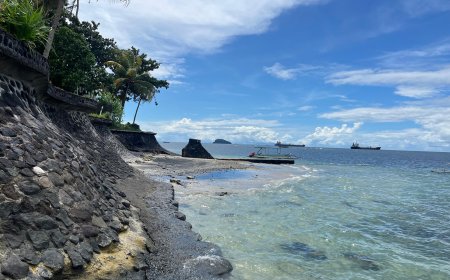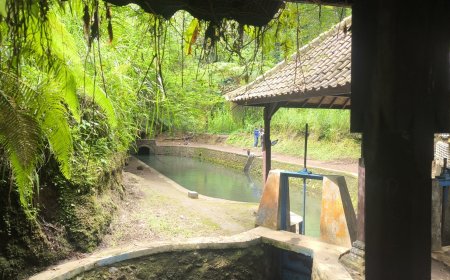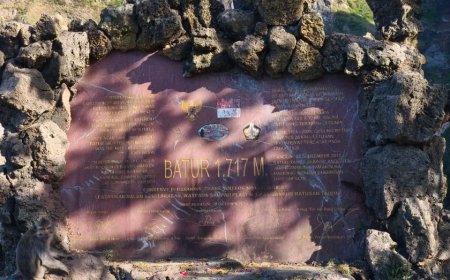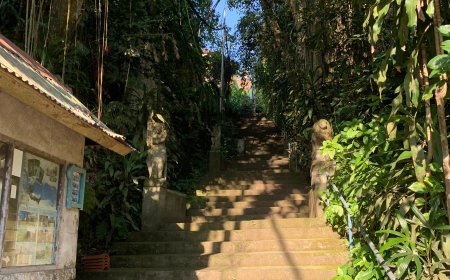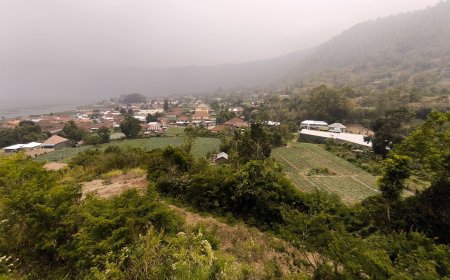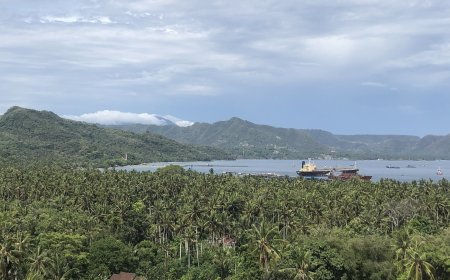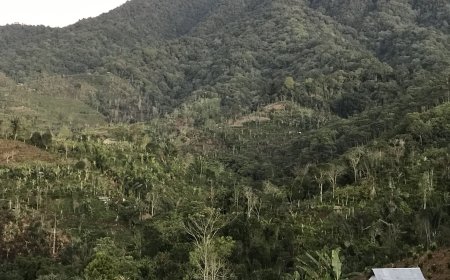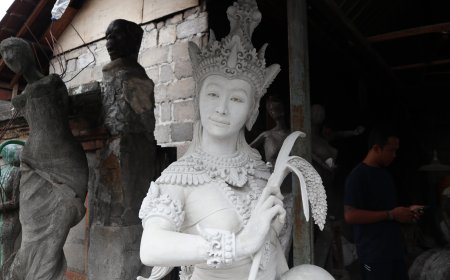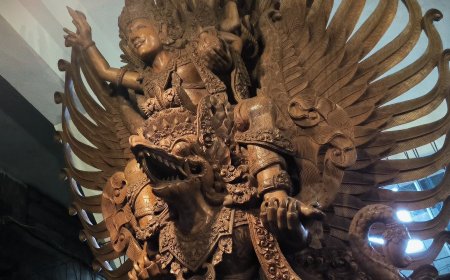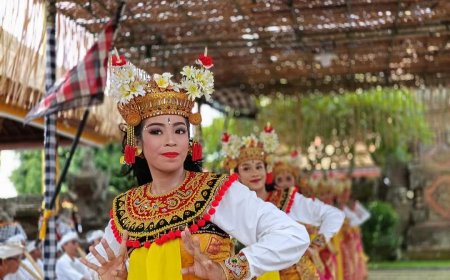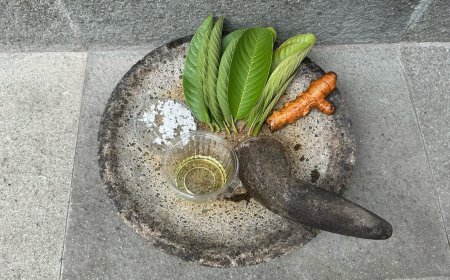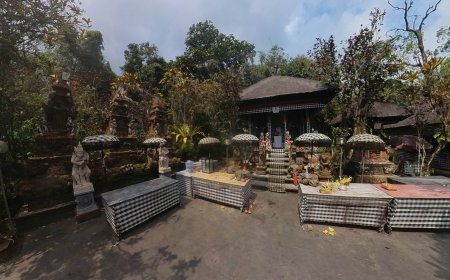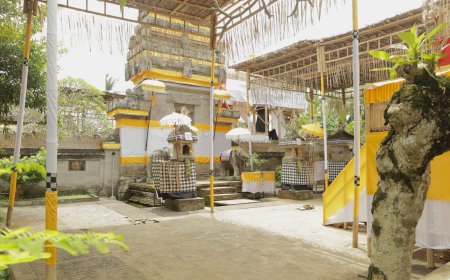Pabean Temple: A Trace of Grandeur on Bali's Northern Coast
Pabean Temple is one of the temples located in the Pulaki area, Buleleng, Bali. This temple blends Balinese Hindu and Chinese religious elements, reflecting the cultural diversity of the past. It features three main zones emphasizing symmetry and harmony, symbolizing spiritual balance and tranquility. Its design is not only aesthetically pleasing but also reflects historical, traditional, and philosophical values from bygone eras.
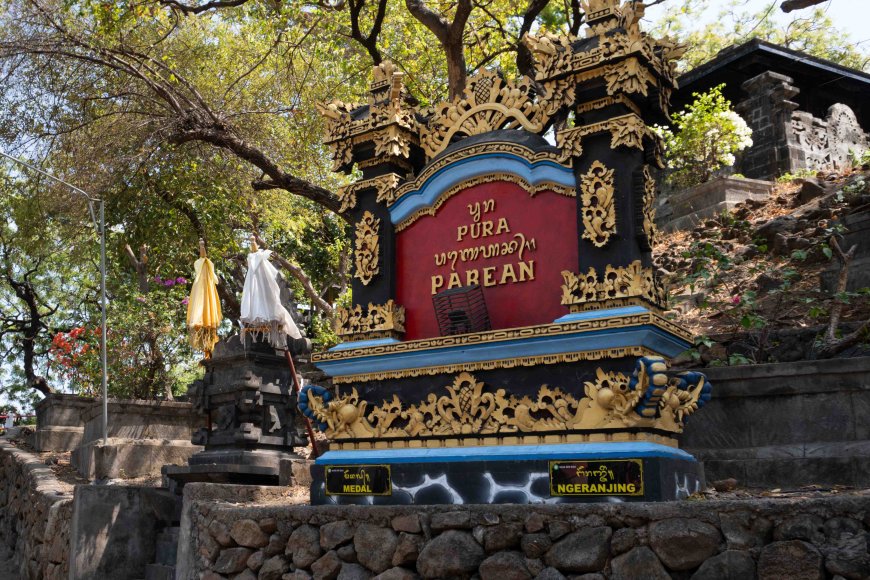
Pabean Temple is one of the well-known temples in Buleleng Regency, Bali Province. Strategically located, the temple faces the open sea, offering a scenic and serene view for visitors. It is renowned for its unique features, including its placement, architectural design, and the profound meanings embedded within its structure.
Pabean Temple derives its name from the word "bea," which refers to activities related to taxes or customs duties for ships docking at a port. With the addition of the prefix "pa" and the suffix "an," the name "Pabean" emerged, symbolizing a place where ships made their stops. The temple boasts historically rich architecture and is divided into three distinct zones that adhere to Bali's traditional values.
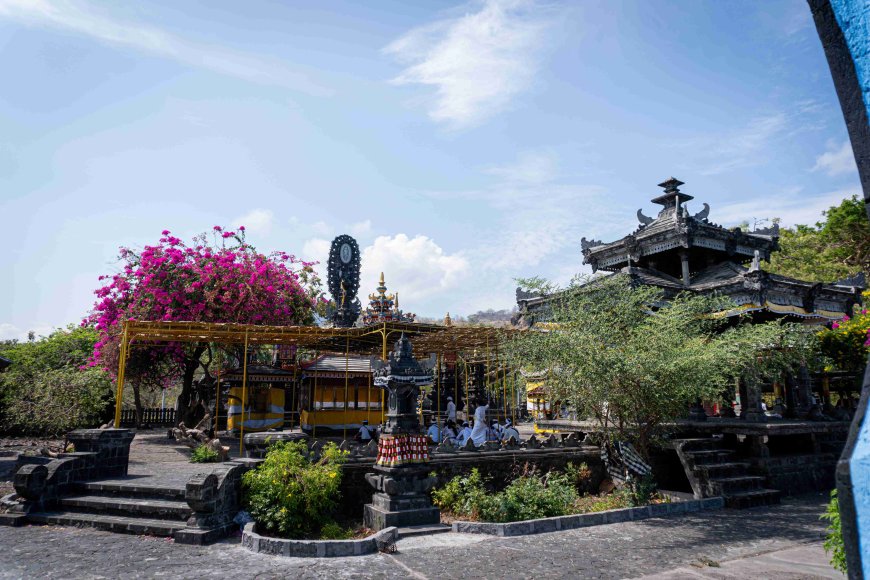
The Pabean Temple Area (Source: Private Collection)
The Pabean Temple is divided into three main zones based on the traditional spatial layout of Bali. These zones are the jaba sisi (outer zone), jaba tengah (middle zone), and jeroan (innermost zone). The jaba sisi encompasses the footpath leading to the front courtyard of the Gelung Kori, while the jaba tengah consists of two Wantilan halls, a Bale Peninjauan pavilion, and a Bale Kulkul tower. The temple's layout follows a symmetrical pattern with an orientation axis towards kaja (mountain) and kelod (sea), reflecting balance and a focused direction toward the most sacred point: the Padmasana shrine in the jeroan zone, the dwelling place of Hyang Maha Tunggal.
In the jeroan zone, there is a row of shrines with the Padmasana at the center, adorned with aksara ongkara (sacred syllables) and golden reliefs of Acintya. The temple's architecture embodies magical and spiritual symbols, such as the octagonal design of the Palinggih Pengaruman Agung, representing the asta dala or the eight cardinal directions. Additionally, there are other shrines, including the Lingga Ida Batara Baruna and the Palinggih Dewi Kwan Im, which feature Chinese-inspired ornaments such as dragon motifs and ancient Chinese coins. The structures reflect a fusion of spiritual, philosophical, and cultural values that require deep interpretation to fully understand their significance.
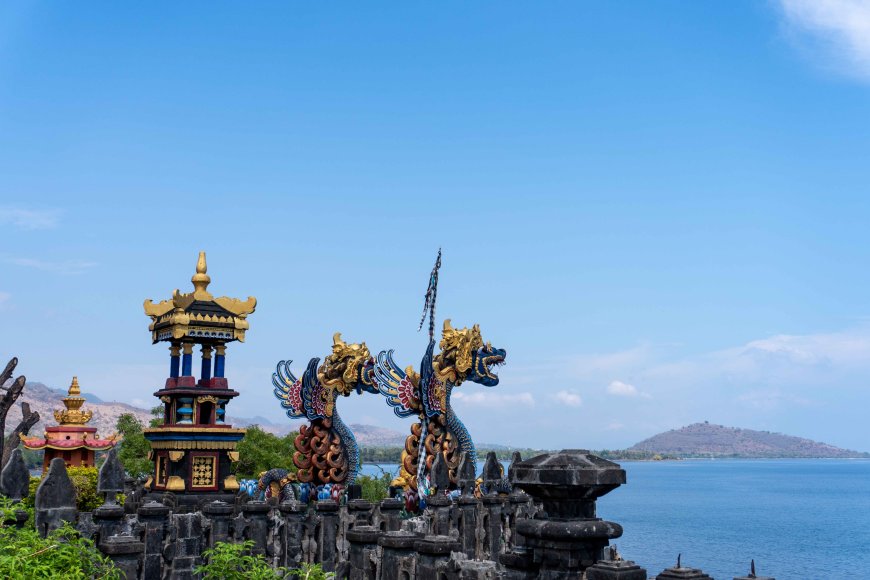
The Architecture of the Dragon Statue Facing the Sea (Source: Private Collection)
The architecture of Pabean Temple was designed by architect Ida Bagus Tugur, with black paras stone as the primary material. The restoration began in 1995, during which Ida Batara Pabean was temporarily relocated to a site south of the temple. A malaspas alit purification ceremony was held in 1999, followed by the ngenteg linggih consecration ceremony on November 19, 2002, coinciding with the fifth full moon and Penampahan Galungan. Situated on the coast of Buleleng, the temple holds a wealth of historical narratives, including the discovery of artifacts such as Chinese plates and human skeletons believed to date back to the Yim Dynasty around 2500 BCE.
Unique stories about the temple include the journey of Dang Hyang Dwijendra, who arrived in Pulaki, where Ida Batara Pulaki had already resided. According to Jero Mangku Teken, one tale describes Ida Batara Pulaki testing Dang Hyang Dwijendra’s power by appearing as a human without arms or legs. Other accounts, such as the influence of trading ships from China, Bugis, and Malay regions, further enrich Pabean Temple's history as a testament to cultural and religious intersections along Buleleng's coastline.
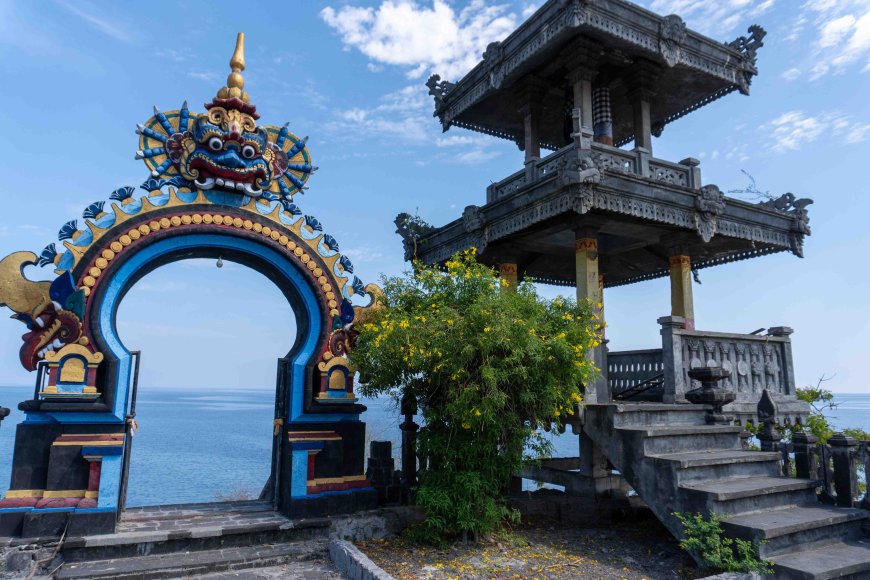
The Entrance Architecture of Pabean Temple (Source: Private Collection)
This temple stands out for its arrangement of shrines, architectural design, and symbolic meanings. Situated on a small hill directly facing Pulaki Temple, it features a circular pathway that serves as the entry and exit route. The circular layout symbolizes a turtle flanked by the dragons Anthaboga and Basuki, representing the earth's layers and water sources, respectively. The positioning of the dragon tails pointing toward the mountains and their heads toward the sea conveys profound philosophical meaning. The main gate, Gelung Kori, is adorned with semicircular ornaments and motifs of seahorses and monkeys, highlighting the authenticity and uniqueness of the temple.
In the lower area of the temple, there are two special shrines designed by Ida Bagus Tugur: the Linggih Dewa Ayu and Linggih Patih Agung. These shrines are creatively crafted from coastal stones, blending seamlessly with the surrounding environment. Symbolizing a place of rest, their design evokes a serene atmosphere in harmony with the beach panorama. The pathway leading to these shrines is also constructed from coastal stones, enhancing the visual appeal while providing access to this tranquil retreat.
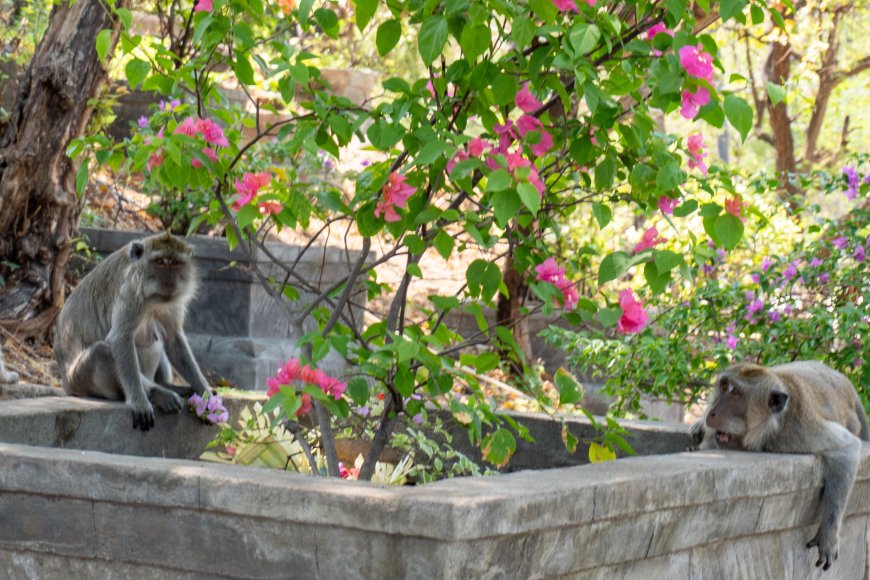
A Troop of Monkeys in the Pabean Temple Area (Source: Private Collection)
Pabean Temple is a must-visit destination when traveling to Buleleng Regency, Bali Province. This temple offers a blend of beauty and cultural diversity from various traditions. Additionally, the stunning coastal or sea views visible from Pabean Temple are a unique attraction that draws many visitors to the site.
While visiting Pabean Temple, visitors can also observe groups of monkeys living around the temple. This unique feature adds to the appeal, complementing its architecture and spiritual ambiance. The entire experience reflects the harmony between culture, nature, and life in Bali.
Moreover, the fusion of Hindu and Chinese cultures at Pabean Temple provides a fresh perspective on embracing diversity. This aligns with Indonesia's motto, "Bhinneka Tunggal Ika" (Unity in Diversity), which is exemplified at Pabean Temple. This philosophy is reflected in the temple's architecture, where various shrines are built to house deities, Ida Batara, and the sacred ancestral spirits of diverse ethnicities and beliefs.

